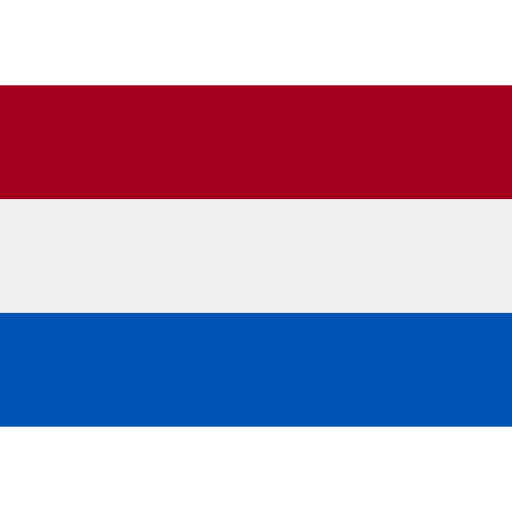Last Updated: 24 September 2025
Blackjack Odds, Probability & Payouts Explained
Understand how blackjack odds work and what you can do to put that knowledge to use.
Guides
Blackjack is a casino game where you can improve your chances of winning by making the right decisions. This guide will show you how to become an expert player by learning the different game variations, house edges, and payouts. We’ll look at blackjack probability, odds, and why using the best blackjack strategy matters every time you play.
What are the Odds of Winning in Blackjack?
When unpacking the math behind how to play blackjack, the odds are essential to understand. They are usually shown as percentage chances of winning, losing, or tying a hand.
For instance, if you are dealt 10 and a King versus a dealer’s 6, the odds of winning swing in your favor at 77%. If your 10 and King faced a dealer’s Ace, your odds of winning drop to 63%
In a standard eight-deck game, where a dealer stands on soft 17 and blackjack pays 3:2, the odds of winning from the outset look like this:
- Players win about 42% of the time.
- The dealer wins about 49% of the time.
- Hands are tied about 9% of the time.
Not all blackjacks are created equal, however. Some games pay 6:5 for a natural blackjack. That increases the house’s long-term win percentage from 0.5% to 2% when you follow basic strategy. Be aware that straying from blackjack basic strategy reduces your long-term winning chances.
Odds vs Probability in Blackjack
In blackjack, “odds” and “probability” describe the same thing differently. Probability comes as a percentage, such as 42% for a player winning. Meanwhile, the odds are commonly rounded to 4:6 – meaning four wins for every six hands that don’t win. While both describe the same reality, probability as a percentage is easier to compare and is used commonly.
What is House Edge in Blackjack?
A house edge exists in all casino games, including online blackjack. It is a built-in advantage that the house has over players, and again, is typically expressed as a percentage. In blackjack, the house edge can be attractively low when sticking to basic strategy – only around 0.5% for an eight-deck game paying 3:2 for a blackjack. Compared to other casino games, blackjack has the lowest house edge.
In that game, every $100 bet should only lose around 50 cents in the long run. Ignoring basic strategy can increase the house edge to 4%, so it’s vital to stick to it to keep blackjack favorable.
Different rules can impact your long-term chances of winning at blackjack. For instance, a 6:5 natural blackjack versus 3:2 nudges the house edge up a little. Plus, in games where dealers hit soft 17, that adds 0.2% to the casino’s edge. The number of decks also plays a role, with a single-deck game boasting better player odds than a six or eight-deck variant. Other factors, like doubling restrictions or late surrender rules, further shift the edge in favor of the house.
Player Odds & Bust Chances
Understanding blackjack card odds helps you to make better decisions based on your starting hand. For example, the chance of being dealt a natural blackjack is about 4.8%, while the odds of starting with a 20 are roughly 7.5%, and 19 is about 7.4%.
Once your hand total is 12+, your next decision has a bust chance unless you stand. Knowing how likely you are to bust or improve to 21 at this point is a powerful weapon in your blackjack arsenal. Here are some player hand totals from an eight-deck game with bust and improvement probabilities:
| Player Total | Bust on Next Card | Player Lands in 17–21 |
| 12 | ~30.8% | 38.5% |
| 13 | ~38.5% | 38.5% |
| 14 | ~46.2% | 38.5% |
| 15 | ~53.8% | 38.5% |
| 16 | ~61.5% | 38.5% |
| 17 | ~69.2% | 30.8% |
| 18 | ~76.9% | 23.1% |
| 19 | ~84.6% | 15.4% |
| 20 | ~92.3% | 7.7% |
As your hand total rises, so does your bust risk, but there is more to decision-making than knowing your bust chances.
Dealer Odds & Bust Chances
Most blackjack games’ fixed hit and stand rules mean dealer odds and bust chances differ from the players’. The main difference is that the dealer must hit until reaching 17 or higher – that strict rule makes the dealer’s upcard a powerful predictor of outcomes. Some games require hitting on a soft 17 (A+6), increasing the dealer’s chances of improving their hand.
Cards 2 through 6 present higher bust chances than any others for the dealer because multiple cards are needed to reach 17 or better. Dealer bust chances reduce markedly when the upcard is a 7 through Ace, as the likelihood of finishing on 17-21 increases.
Here’s how the dealer’s bust and stand chances stack up:
| Dealer Upcard | Dealer Bust Chances | Dealer Lands in 17–21 |
| 2 | ~35.3% | ~64.7% |
| 3 | ~37.6% | ~62.4% |
| 4 | ~40.3% | ~59.7% |
| 5 | ~42.9% | ~57.1% |
| 6 | ~42.1% | ~57.9% |
| 7 | ~26.0% | ~74.0% |
| 8 | ~24.0% | ~76.0% |
| 9 | ~23.2% | ~76.8% |
| 10 | ~21.2% | ~78.8% |
| Ace | ~11.7% | ~88.3% |
Now that you understand player and dealer odds, the next step is putting those numbers into action.
Making +EV Decisions
Your decisions in blackjack, whether to hit, stand, double, or surrender, should be guided by expected value, which measures the long-term advantage of each move. This means consistently following a positive EV strategy over many hands will maximize your expected winnings even if short-term results fluctuate.
Positive EV Play Based on Dealer Upcard
Some decisions are straightforward, such as always hitting 2-11 and standing on 17-21. For hands totaling 12-16, the dealer’s upcard strongly affects your best move. By comparing your bust chances with the dealer’s likelihood of busting, you can choose the action with the highest expected value.
| Dealer Upcard | Dealer Bust Chance | Player Bust Chance (12–16) | Positive EV Play | Reasoning |
| Weak (2-6) | 35-42% | 31-62% | Stand | Dealer likely busts, standing preserves advantage |
| Neutral (7-9) | 23-26% | 31-62% | Hit | Dealer often makes 17-20, and hitting gives a chance to catch up |
| Strong (10-Ace) | 12-21% | 31-62% | Hit or Surrender | Dealer is strong, hitting reduces losses, surrender if allowed |
Blackjack Payouts Explained
The most favorable scenario is a natural blackjack, where the house pays 3:2 (a $20 bet wins $30). Some casinos pay 6:5 for a natural (a $25 bet wins $30), which increases the house edge.
After splitting a pair, it’s worth rechecking the blackjack payouts. Some games pay 1:1 on blackjack after a split, reducing potential winnings from the 3:2 or 6:5 odds of a natural blackjack.
When insurance is offered, you can expect odds of 2:1. However, that is generally considered an unwise bet because the dealer’s chances of blackjack are lower than all other hand possibilities.
Almost all blackjack game variations will pay a standard winning hand 1:1. This even money bet is the universal standard.
How Blackjack Game Variations Change the Odds?
Different blackjack games result in different house edges and odds because they change deck numbers, dealer rules, and payout percentages. Next, we’ll examine a few popular game variations to discover how they compare.
Single-deck is a favorite with blackjack veterans for its low house edge. One deck makes tracking higher-value cards easier, and a natural blackjack generally pays 3:2. The house edge here rarely exceeds 0.5%; indeed, some very favorable games drop that towards 0.2% when allowing doubling after splitting.
Games with six or eight decks tend to be the go-to for most casinos. Along with increasing the number of hands played by reducing shuffling, these games nudge up the house edge towards 0.7% in most cases. More decks mean fewer natural blackjacks for players, and slightly improve the chances of a strong hand for dealers.
Sometimes called European 21, this variant uses two decks and follows one distinct rule: the dealer does not receive a second card until the players have acted. That brings the house edge in at 0.62% for this double-decker, with subtle shifts in the busting probabilities compared to the standard multi-deck games.
Why Blackjack Strategy Matters for Your Odds?
Many casino games do not offer a workable strategy that can influence your success while playing. Blackjack strategy gives you a unique chance to follow a math-driven formula that goes beyond any “gut feelings” and whether you’re wearing your lucky socks, and keeps blackjack a favorable game.
Use basic strategy to avoid mistakes like taking insurance or standing on hands where hitting is the mathematically correct play. Doing that keeps the house edge to a respectable level of around 0.5% so you can play for longer.
Blackjack Odds Compared to Other Games
While blackjack heads the pack for the best odds, other games are worth examining to help you decide which one to play. Here’s how a few others stack up against blackjack.
The two card games are casino staples, yet comparing blackjack to poker is like comparing apples to oranges. Blackjack’s 0.5% house edge is of greater appeal than the 1%+ edge found in video poker. Meanwhile, games like Texas Hold’em and Omaha, played against other players, have no house edge but rely heavily on skill.
The king of the game of chance is roulette, where the house edge massively overshadows player-friendly blackjack. A roulette strategy can help to keep you in the game longer, but the house edge of 2.7% for European and 5.26% for its American cousin is many times that of the 0.5% in blackjack.
Another simple card game is James Bond’s favorite, baccarat. A bankroll-preserving baccarat strategy is a sound idea. However, bets on the banker result in a 1.06% house edge, while the player bets mean a 1.26% casino advantage. The skilled decision-making in blackjack, based on math, swings the odds in favor of BJ again here.
Master Blackjack Odds Today
Ready to put your blackjack skills to the test? Join CoinPoker now and play on any device in our crypto casino in moments. We have dozens of live games, real dealers, and the best blackjack odds in games running 24/7 on our no-KYC platform.
FAQs
What are the odds in blackjack?
In a standard eight-deck game, players win about 42%, lose about 49%, and push around 9%.
What is the probability of winning blackjack with basic strategy?
Using basic strategy reduces the house edge to about 0.5%, giving a chance of long-term winning of roughly 49.5%.
What are the odds of winning three blackjack hands in a row?
With a 42% win rate, the chance of winning three hands in a row is about 7.4%.
What are the odds of losing 5 or 7 blackjack hands in a row?
Losing five straight hands is 2.9%, and losing seven in a row is around 0.7%.
What blackjack variant has the best odds?
Single-deck blackjack with 3:2 natural blackjack payouts offers the best odds.
What are Free Bet Blackjack odds?
Free Bet Blackjack has a house edge of about 1.0–1.5% due to rules like the dealer pushing on 22.
Explore More
Announcements
Read recent announcements from CoinPoker about new games, ambassadors, and changes to our platform.
8 PostsGuides
The go-to resource for mastering poker with expert tips and strategies. Whether you're a beginner or a pro, our guides will elevate your skill level.
60 PostsNews
Find the latest poker news, plus our latest CoinPoker Weekly and Monthly Newsletters. Updates about games, promotions and other exciting crypto news.
91 PostsPromotions
Find the latest coinpoker promotions here. Explore the crypto poker world with the best poker promotions available.
1 Post
















